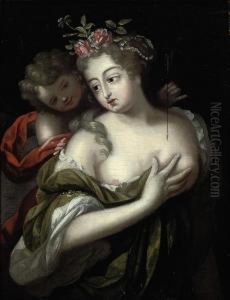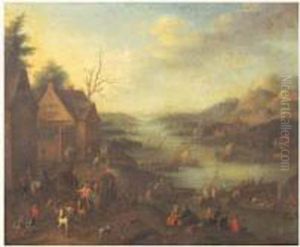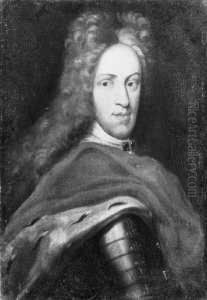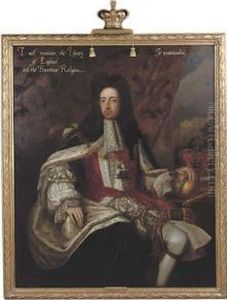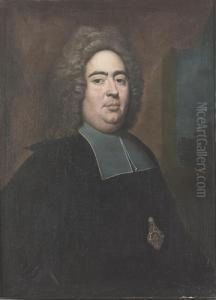Frans Van Stampart Paintings
Frans Van Stampart was an Austrian painter and engraver born in 1675, in Antwerp, Belgium, which at the time was part of the Spanish Netherlands. Despite the obscurity surrounding his early years, he is known to have developed his artistic skills in the rich cultural atmosphere of Antwerp, a city renowned for its artistic heritage, with figures such as Peter Paul Rubens having left a lasting impact on its art scene.
Van Stampart moved to Vienna, Austria, where he spent the majority of his career. His move to Vienna was pivotal, as it marked the beginning of his association with the imperial court. In Vienna, he became known for his portrait paintings and engravings. He was particularly esteemed for his ability to capture the likeness and character of his sitters, which included aristocracy and prominent members of society. His style was indicative of the Baroque period, characterized by dramatic expression, rich color palette, and a strong sense of movement, yet his portraits also conveyed a certain level of restraint and clarity that was appreciated by his clientele.
During his time in Vienna, Van Stampart became a court painter to Emperor Charles VI, one of his most significant patrons. This position allowed him to secure numerous commissions and gain prestige. His works from this period reflect the opulence and grandeur of the imperial court, often depicting his subjects in luxurious garments with elaborate backgrounds that signify their status and power.
Despite his success, there is not much documented about his personal life, which is a common issue with many artists of the period. His death occurred in 1750 in Vienna, and by this time, he had established himself as a noteworthy artist in the Habsburg territories. While he may not be as widely recognized as some of his contemporaries today, Frans Van Stampart's contributions to portrait painting and engraving during the Baroque period remain significant, particularly in the context of Austrian art history. His works are preserved in various collections and museums, offering insight into the artistic trends and societal figures of his time.
